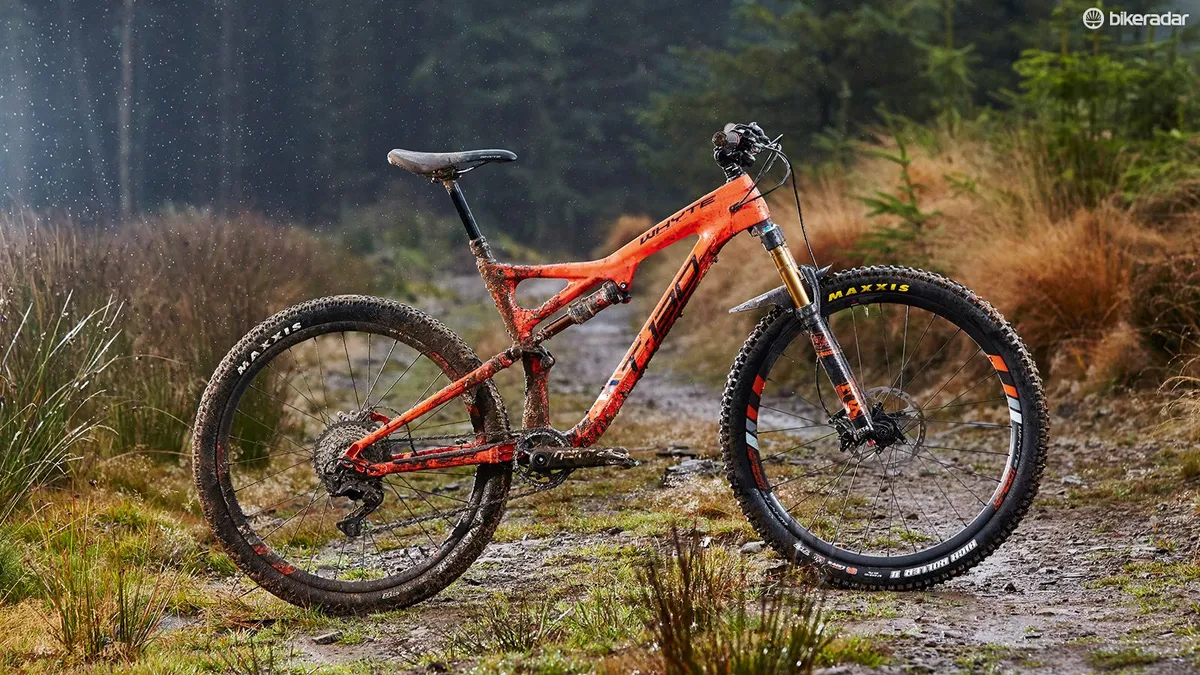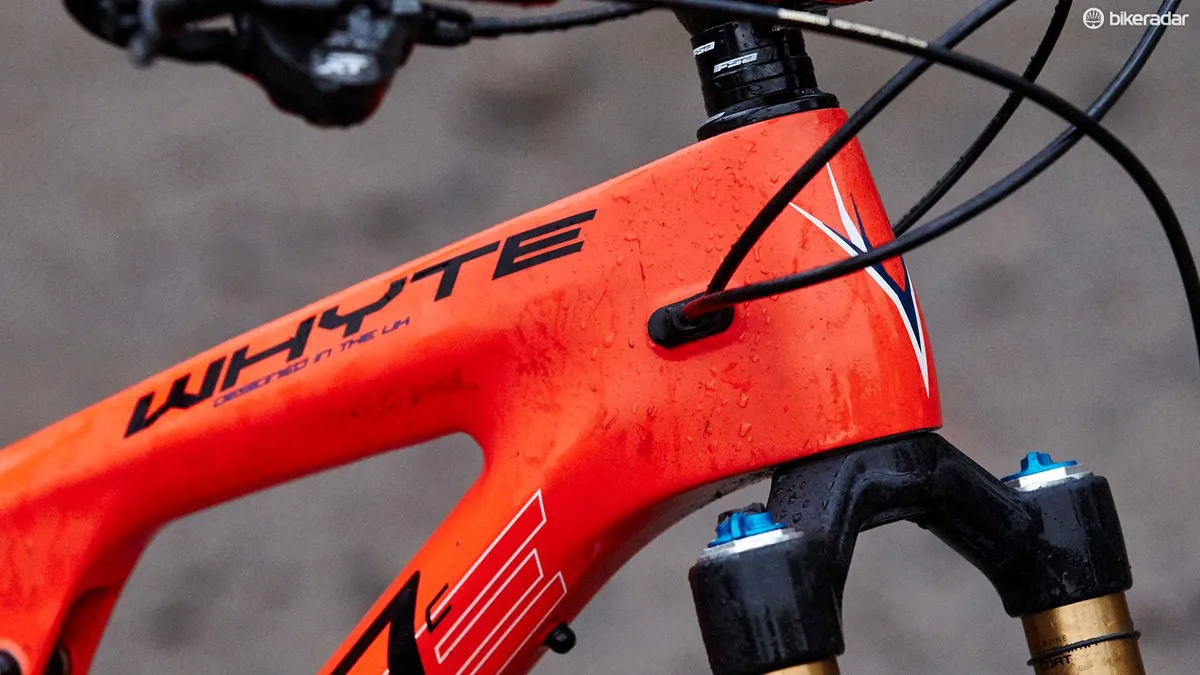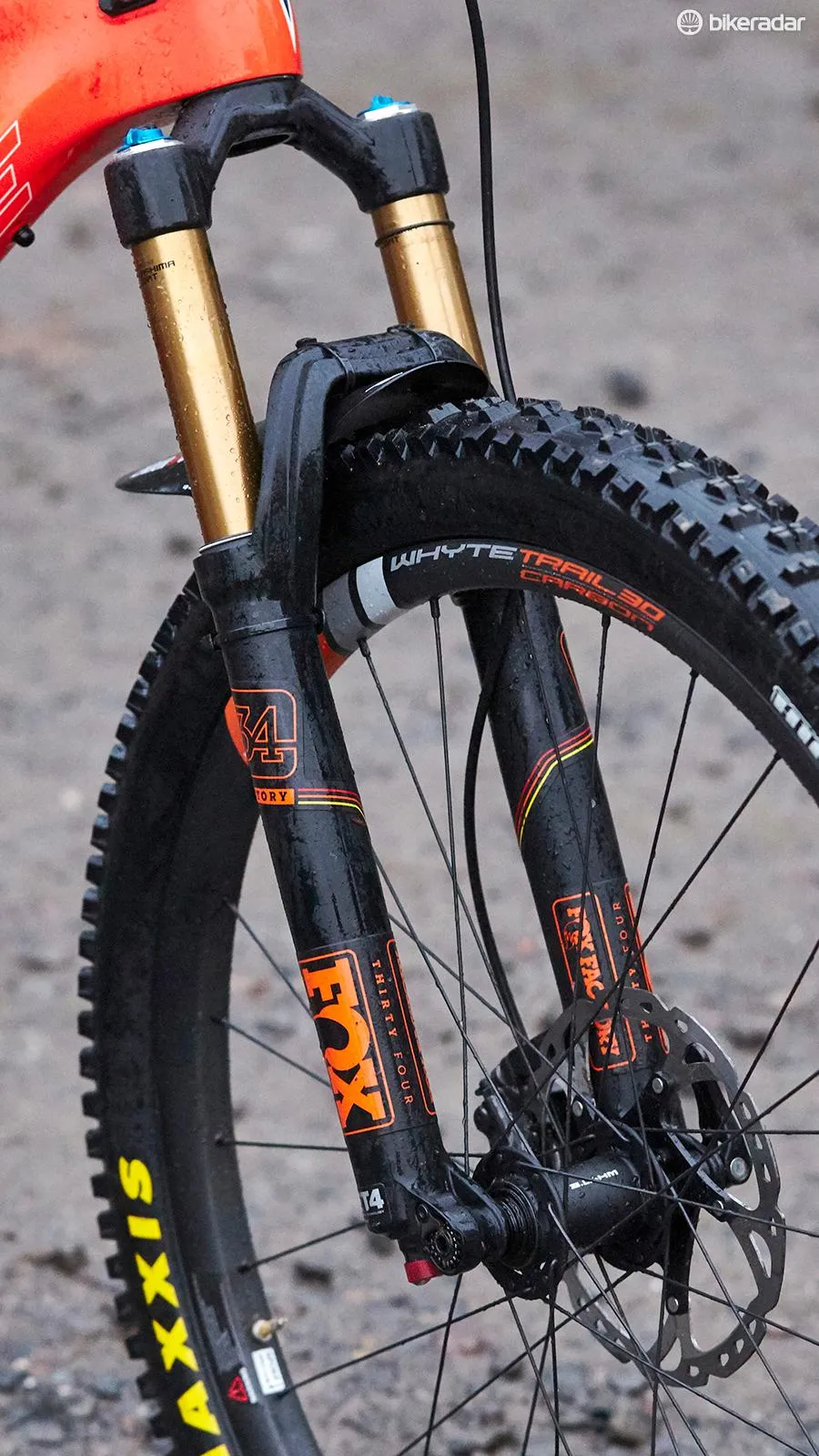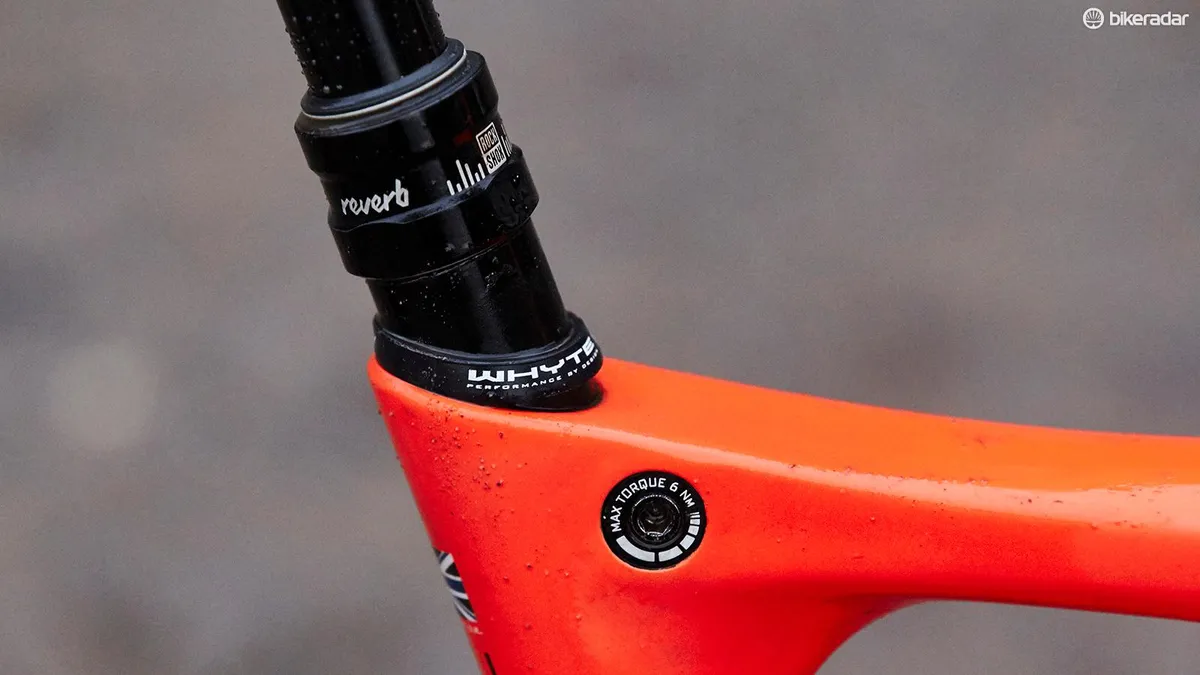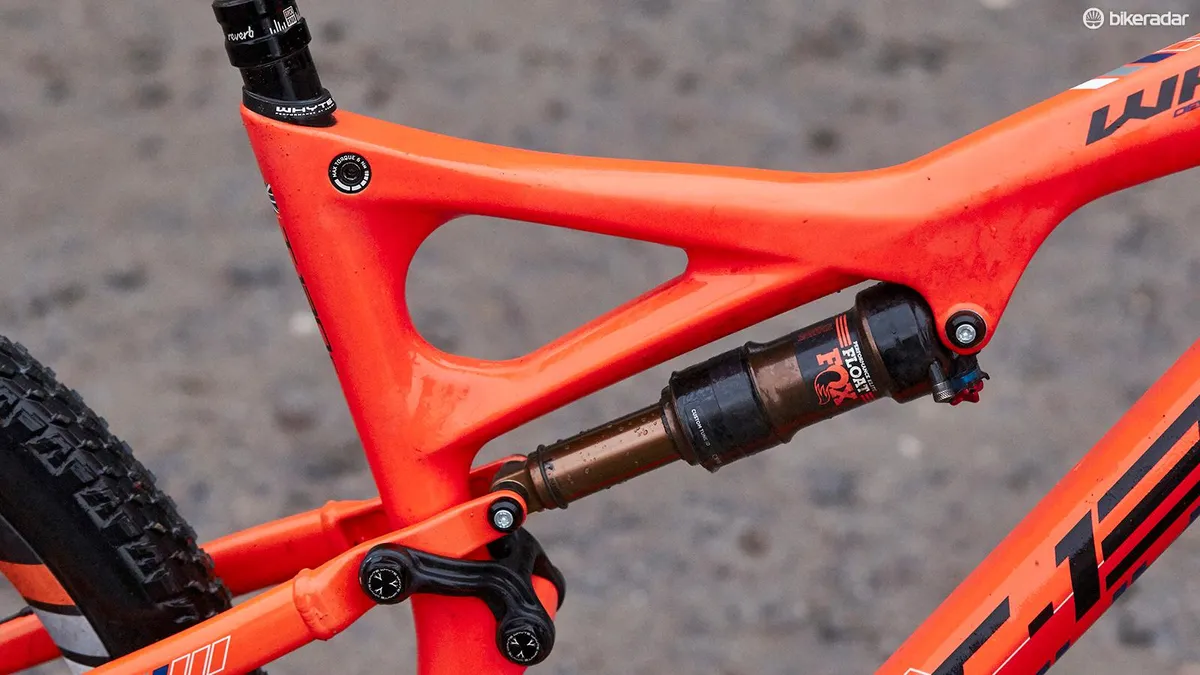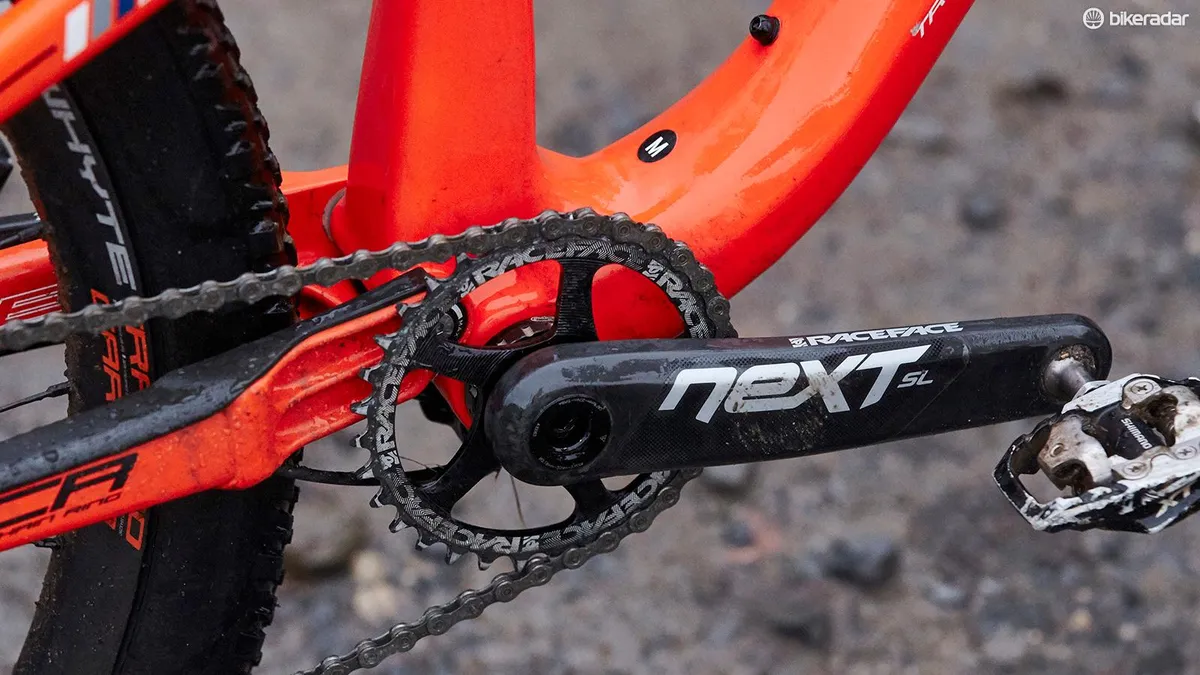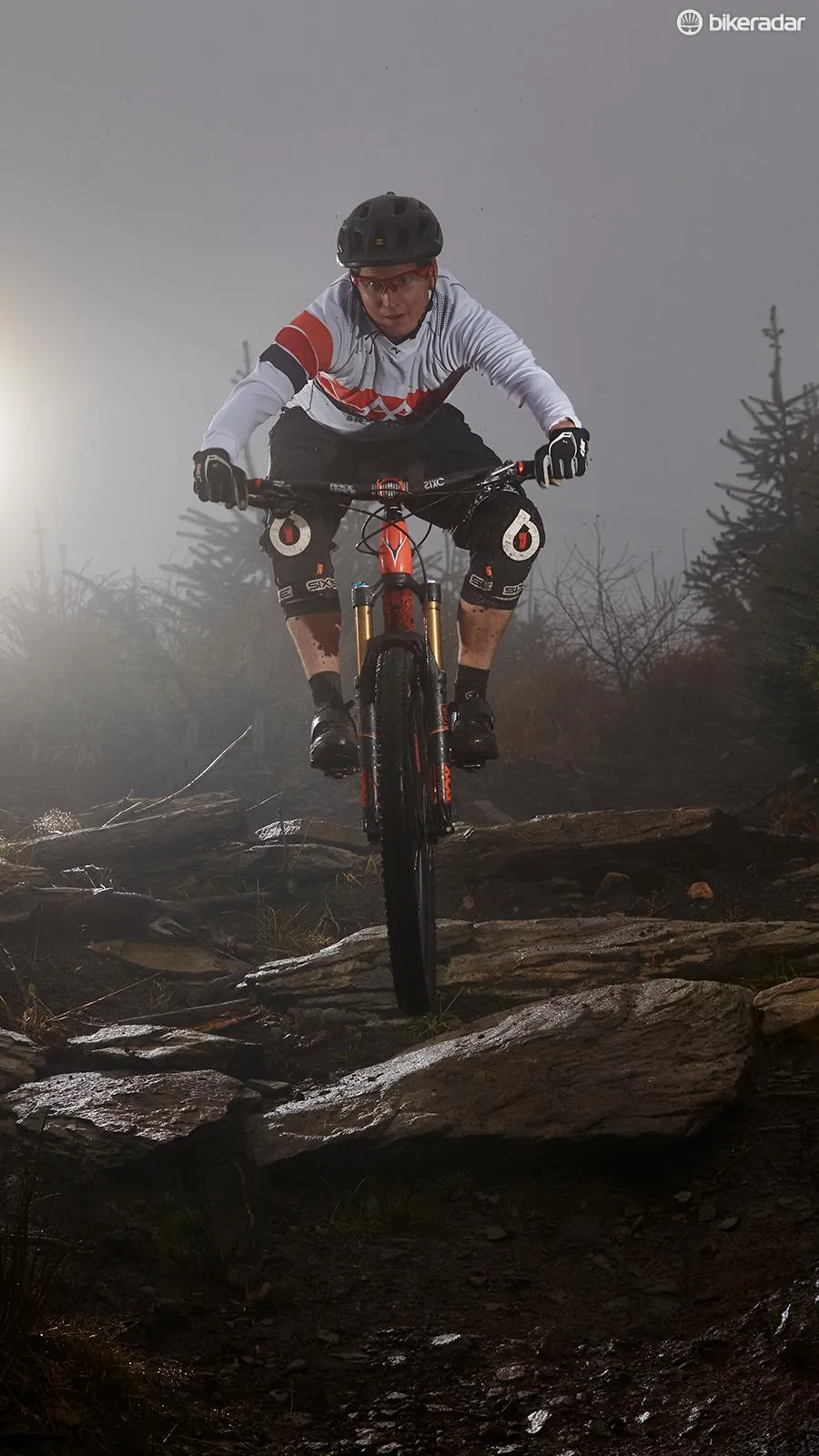The short-travel trail bike category is the scene of one of the most fiercely fought mountain bike battles we’ve seen in some time. Fortunately for Whyte, the latest incarnation of the T-130 doesn’t pull any punches.
Stiffer all round, though small riders will be disappointed
If you’d not guessed it yet, the ‘C’ in the name stands for carbon. Whyte claims the new composite front triangle is 11 per cent stiffer than its alloy counterpart, saving an impressive 580g when coupled with the new symmetrical back end, which is still made from alloy. Related: Whyte’s T-130 short-travel ripper gets a carbon makeover
The frame is single-ring specific, with no provision for a front derailleur. This has allowed Whyte’s engineers to make the main pivot behind the bottom bracket (BB) wider, bolstering stiffness. The four-bar rear end has been widened too, and now has 148x12mm ‘Boost’ axle spacing. Whyte say this has increased stiffness by a further six per cent.
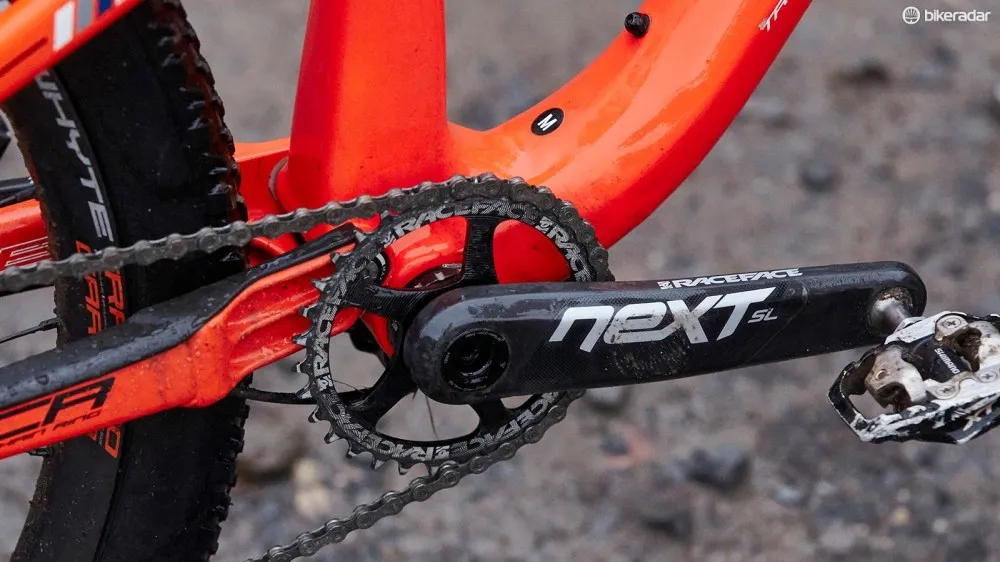
With no front derailleur to worry about, Whyte has been able to widen the main pivot, helping to bolster frame stiffnessGeometry has been revised too, with the effective top tube length and reach on the medium size tested stretched to 611mm and 449mm respectively, and the head angle kicked out to 66.7 degrees. Smaller riders sadly miss out on all these changes though, because the carbon T-130s are only available in three sizes – medium, large and XL.The top-tier Works bike comes with Fox Factory suspension units and Shimano’s latest, crisp-shifting XT 11-speed transmission. The own-brand carbon wheels feel solid and plenty stiff enough through high-load turns. If you can’t quite afford the Works bike, there’s a RockShox equipped model for £1,000 less.
Taut, sprightly and responsive ride
Wrap your hands around the wide 760mm bar and you may be lulled into thinking the emphasis here is on descending. But start applying the power on the first climb and the T-130 C’s taut, sprightly response will have you thinking again.
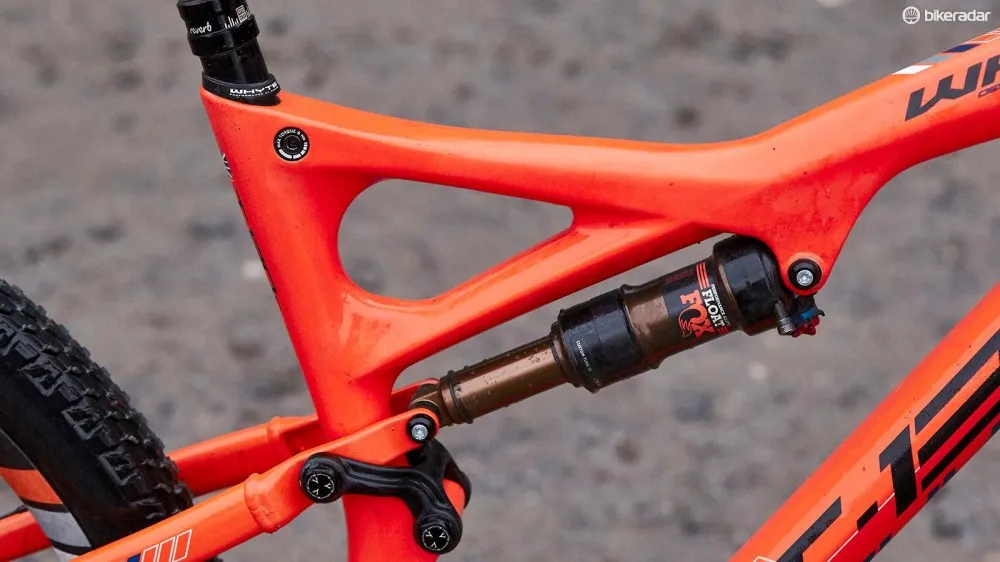
A Factory-edition Fox Float shock handles biz at the rearThings feel stiff, responsive and efficient even when you’re really cranking. We rarely felt the need to use the shock’s low-speed compression lever.Related: Whyte T-130 RS
The stretched-out top tube means there’s plenty of breathing room when seated, even with a stubby 50mm stem fitted. The 12.5kg weight and wide-range (11-42t) XT cassette don’t exactly do the Whyte any harm when climbing either. Wind your way into technical singletrack and the T-130 C’s impressive handling shines through instantly.
The well-balanced geometry manages to straddle the line of agility and stability ridiculously well. Awkward nadgery sections of trail can be tackled with nimbleness and confidence.
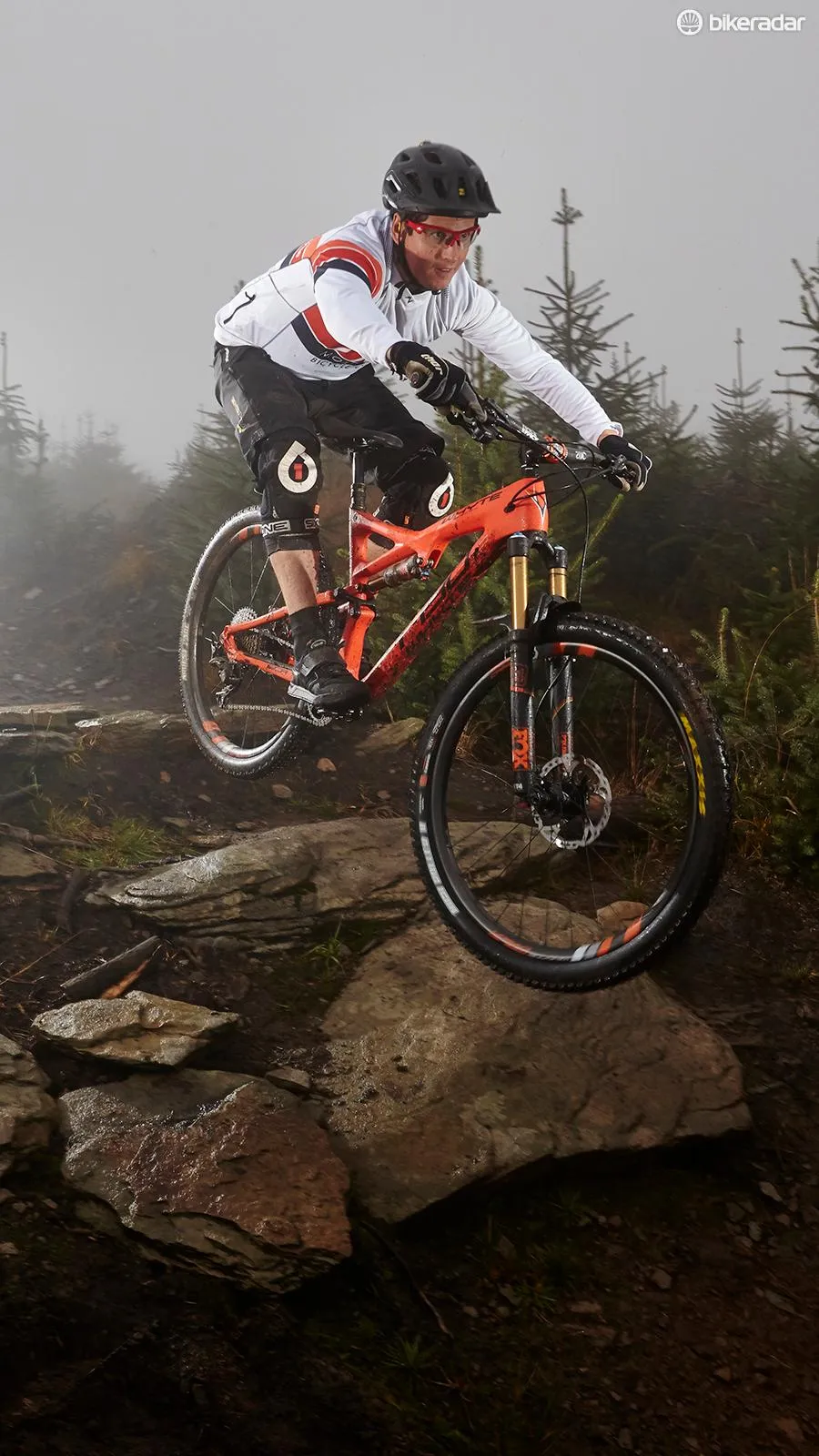
The T-130 C feels a far more capable bike than its 130mm of travel might suggest
The low 332mm BB and stumpy 420mm chainstays add flickability for when things get really twisty, as well as keeping things fun and lively when the pace dips a little. On greasy natural trails you may want a more aggressive rear tread though.
When you do get to stretch the T-130 C’s legs, the supportive, progressive suspension and well-thought through geometry make you feel like you can just keep pushing and pushing. Considering there’s just 130mm of travel on tap, we were surprised by just how fast and with how much confidence we could attack the trail.
Also consider:
Diamondback Release 3
With a new dual-link rear suspension, the Release is an efficient pedaling machine that's capable and agile on aggressive terrain. See our full Diamondback Release 3 review.
Devinci Troy Carbon RS
With a new dual-link rear suspension, the Release is an efficient pedaling machine that's capable and agile on aggressive terrain. See our full Devinci Troy Carbon RS review.
